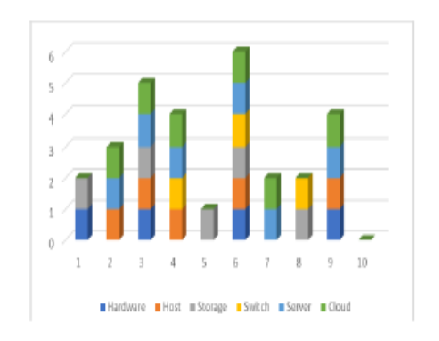


Indian Journal of Science and Technology
DOI: 10.17485/IJST/v16i39.1913
Year: 2023, Volume: 16, Issue: 39, Pages: 3386-3393
Original Article
Mohammed Al Qurashi1*
1Computer science department, Al - Baha university, Al Baha, Saudi Arabia
*Corresponding Author
Email: [email protected]
Received Date:29 July 2023, Accepted Date:19 September 2023, Published Date:25 October 2023
Objectives: The primary objectives of this research are to address the security concerns related to cloud computing, emphasising attacks that target different hypervisor layers. The goal is to propose a revolutionary approach called "hGuard," that provides a thorough protection mechanism against malware attacks across several hypervisor levels. Additionally, the research aims to establish this method's ability to improve cybersecurity in cloud systems and show its efficacy through practical studies. Methods: The study combines theoretical analysis with actual experimentation to accomplish its objectives. The "hGuard" approach that is being proposed was developed to defend against attacks on several hypervisor levels. The strategy produces an output that the data mining algorithm, such as Apriori uses to predict potential attacks. Through this association, it is now possible to simultaneously anticipate and stop malware injection attempts at various hypervisor layers. Empirical tests that simulate attacks and examine real-world situations provide quantitative information on the method's performance. Findings: The "hGuard" approach achieves a 95% detection accuracy for identifying malware injection attacks, with a 3% false positive rate for minimal misclassifications of non-attacks. It also demonstrates an 5% false negative rate, reducing errors in categorizing actual attacks. Additionally, the approach boasts an efficient 20 ms execution time, ensuring rapid processing and prediction of potential attacks. Novelty: The novelty of this research lies in the development of the "hGuard" method, which addresses a crucial gap in existing security approaches. Unlike conventional methods that tackle hypervisor levels individually, the proposed approach offers a holistic defense mechanism capable of countering malware attacks targeting multiple levels simultaneously. The integration of the Apriori technique for attack prediction further enhances its novelty by providing a data-driven approach to proactive cybersecurity. The empirical validation of the method's effectiveness contributes to its novelty, showcasing its potential as a valuable tool for detecting and preventing malware attacks in cloud computing. Furthermore, the research suggests avenues for extending the application of the "hGuard" method to other domains within the realm of cybersecurity.
Keywords: Cloud Computing, Cloud Security, Hypervisors, Virtual Machines, Malware Attacks
© 2023 Qurashi. This is an open-access article distributed under the terms of the Creative Commons Attribution License, which permits unrestricted use, distribution, and reproduction in any medium, provided the original author and source are credited. Published By Indian Society for Education and Environment (iSee)
Subscribe now for latest articles and news.